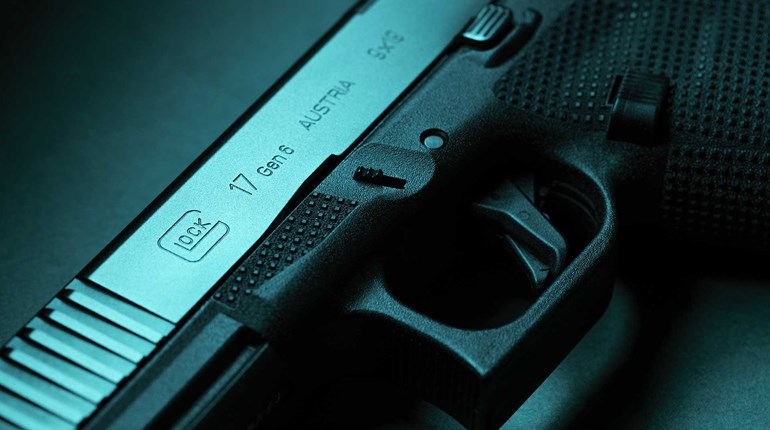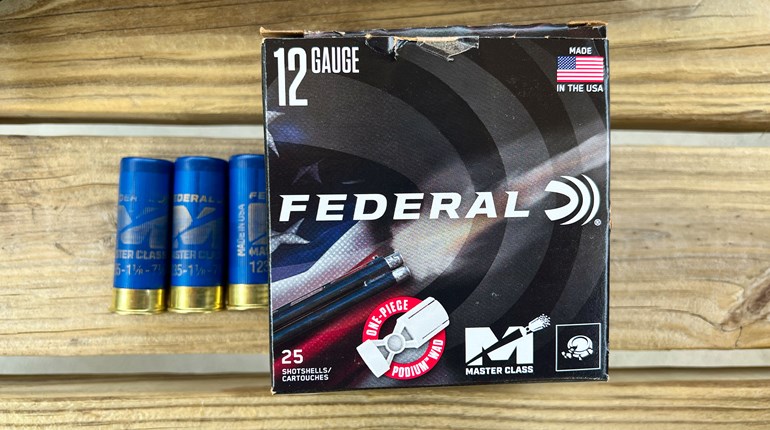
Most people’s introduction to any sort of formal initiation to handgun shooting, especially of the personal-defense-oriented variety, happens in an afternoon or maybe the course of a Saturday on an indoor range. Things are taken slowly, there’s a heavy emphasis on the classroom element, round counts are held down to the 50- to 100-round threshold and it doesn’t generally involve drawing from the holster or much work under the pressure of a shot timer.
And this is good. Getting initial exposure to a potentially lethal tool like a handgun should be calm and low-pressure. Ideally, you want folks to get accustomed to its use in an environment with a minimum of artificial pressure and distractions.
For handgun toters who want to pursue more advanced training, however, this usually involves seeking out a class with more time spent on the range and a higher round count. Options can vary widely, from weekend classes taught by traveling instructors to formal curricula taught by shooting academies at fixed-base gun schools, but whichever option is chosen, the experience will be very different from the typical afternoon spent at the local indoor range.
For starters, peak outdoor-training season in most of the country runs from late March through perhaps early November. In other words, most of the time it’s going to be hot. It’s hard to learn when you’re hanging on your chinstrap from heat exhaustion, not to mention how uncool it would be to disrupt the class for everyone else by becoming an actual heat casualty.
Bring water, lots of water. In fact, bring more water than you think you’ll need, just in case. You can always share the excess with someone who didn’t read this column. Wear sunscreen. This is especially important in a two-day or longer class when you could really impact your effective learning on training day two or three by inadvertently cooking yourself on day one. You probably know that a brimmed cap is a safety accessory for shooting by keeping spent brass from winding up behind your safety glasses, but if it’s a hot and sunny outdoor class environment, consider a hat with a wide brim all around (called a boonie hat) for the portable shade.
At either end of the training season, weather may be cooler and there’s the chance of rain year ’round. Because most people have booked these classes ahead of time, an instructor is going to try and maximize training time, even if it’s raining. While the “If it ain’t raining, you ain’t training” line is silly in a civilian environment (people don’t learn well and are less safe when they’re uncomfortable and distracted by the rain), instructors generally won’t stop class for a little drizzle. Check the forecast and bring rain gear or a coat or jacket as appropriate for the temps and precipitation. Important safety tip: Before class, go ahead and cut all the drawstrings out of the garment. I’ve done this even on expensive gear, because a drawstring winding up in the trigger guard of a pistol during the holstering process is a potential tragedy waiting to happen.
If you haven’t invested in active—also known as electronic—hearing protection, before your first big class would be an excellent time to do so. You don’t have to drop a bundle on high-dollar Safariland Liberators, although they’re undeniably comfy and very effective. I used a pair of inexpensive Howard Leight Impact Sports for the better part of a decade; they still work and stay in my range bag to use as a backup or loaner.
Here’s a tip for using active ear pro in a training environment: Since the mics on the earmuffs are forward-facing and you’re going to be spending a huge chunk of your shooting time on the line with the instructor behind you, wear them backward with the mics pointing to your rear. It makes a huge difference in being able to understand range commands.
In a lot of these sorts of classes, you will be on your own for ammunition management, by which I mean having enough ammo in loaded magazines to do the next evolution or drill. You will probably be given a rough idea of the expected round count before the class, but nobody ever felt sad for bringing too much. The “worst-case scenario” would be that you must take some home, while the best case is you get to be a hero by helping someone who failed to bring enough.
Bring enough magazines. A rough rule of thumb that I learned from the late instructor Todd Louis Green is to bring enough magazines so, if necessary, I can I can step up to the line for any string of fire with 50 rounds in the gun and in spare mags. A handy accessory here is a “dump pouch.” Drop your empty and partially empty mags in there to avoid confusing them with loaded ones.
Advanced schools mean magazine loading. I know it’s a point of pride among some people to never use a mag loader, even in a 1,000-round course, but I think an Uplula from Maglula is the greatest thing since sliced bread. There’s no real virtue in suffering, especially unnecessarily.
Speaking of virtue and suffering, this is going to be the sort of situation where you find out all the sharp corners and rough spots on your handgun. Shooting gloves are definitely an option if you’re going to be shooting something like a 1911 with sharp checkering. I’ve been in many high-round-count, two- and three-day classes with custom 1911s sporting 20- or 30-lpi checkering and almost always wound up with Band-Aids somewhere on my paws. There’s also the dreaded “Glock knuckle,” which affects the knuckle of your traffic-signaling digit sometime around the morning of day two. Bring tape, Band-Aids and moleskin in your boo-boo kit.
One last overlooked detail: Bring a small notebook and pen. You are going to be drinking from the firehose of knowledge over the course of the weekend, and it would be a shame to forget something because you didn’t write it down.
Now go be safe and train hard.




































